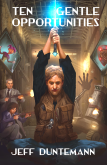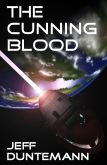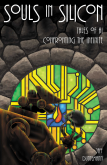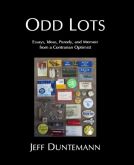I’m culling the collection. It’s making me a little nuts. Carol and I are moving from a house with 4600 livable square feet (plus an oversized garage) to 3100 square feet plus a garage that will fit two biggish cars if you smear Vaseline all over them. (There will be another 350 square feet of livable space once our contractor installs an air conditioner in the small garage.) We’re in our sixties now. We’re trying to simplify and streamline, which sounds easier than it is, simply because a good deal of it is learning how to let go of Stuff.
The 21st Century may well be remembered as the beginning of the Age of Stuff. We’ve always had a certain amount of Stuff, and one of the legacies of the Industrial Revolution is, of course, allowing poorer and poorer people to have more and more Stuff. When I was a young teen, I thought I was as rich as Croesus (quick, without googling him: Who was Croesus?) simply because I had a typewriter, a telescope, a pair of walkie talkies, and a VOM. Now I look around the house, and I ask myself how many standard Croesuses the collection represents.
Wow.
China has a lot to do with the Age of Stuff, as does eBay. Stuff that used to go out on the curb can now be bought by people who really really want just that precise model of waffle iron. (What used to be considered trash I often think of as “parts units.”) I found a NOS hair curler on eBay precisely like one that Carol had owned and loved in the 80s. Better engineering means that the Stuff we have is often better Stuff, and careful people like Carol and myself have an instinct for being careful with things, making them last longer and longer. We still have the blender we got as a wedding present in 1976, and we still use it several times a week. 70s cars may have been crappy. 70s blenders rock.
So we’re keeping the blender. But what about all the rest of it? That is pretty much the current challenge. The Big Truck will be loading up some time late November or early December. We’ve already taken several carloads of Stuff to Goodwill, and given the best of it to our friend Diedre for her indoor flea market table. And damn if the house doesn’t look the least bit emptier.
The worst of it is about books. The last time I cataloged our library, we had about 2500 books. We did an initial purge last year and got it down to about 2200. I let go of Charles Platt’s Garbage World, and had the fleeting insight that it was symbolic. I gave away Lupoff’s Sacred Locomotive Flies even though it’s my favorite SF book to make fun of. I got rid of stuff that was badly written or simply a bummer, like Malzberg’s wretched Beyond Apollo. If I ever discover an aching desire for bad SF, well, there’s always eBay.
But really, it’s getting tough. The “why the hell do I still have this?”purge is over. Now I find myself on my rolling library ladder, staring at the spines of books that, if not excellent, actually have some value, or at least served me well at one time.
One time, sure. Often a very long time ago. I realize that I’ve kept a lot of them for sentimental reasons, like my father’s 1940 drafting textbook. My college career was a very mixed bag, haunted by a lot of third-shelf thinkers who didn’t know how to teach and didn’t like being challenged. Still, there were some gems in all that dirt: I’ve kept some books because they were given to my by Dr. Rachel Romano, who took a special interest in my talents as a writer at a time when most of my knucklehead profs were telling me deadpan that I should apply to law school. I look at some and ask myself, “Did I ever actually read this?” Dr. Romano died in 1985. I don’t think I will do her any disrespect by putting her books in someone else’s hands. She was a wonderful influence in my life, and the influence is what matters. The books are simply mementos. I don’t know who originally said this, but I’ve been saying it a lot to myself recently:
Not all of your past belongs in your future.
It’s true. Very true.
I’ve got about 75 books in the purge pile right now. A few were easy pitches, being slim and having somehow escaped my notice for 40+ years, like Philip Slater’s silly-ass tantrum The Pursuit of Loneliness. Many were good books on science and tech that are now simply obsolete, irrespective of their excellence, like Pickering’s 1001 Questions Answered about Astronomy, and the 1990 first edition of Microsoft Computer Dictionary. I had several books on film photography that clearly won’t be helpful anymore. Some are now sad, like Enterprise by Jerry Gray, which is all about how the Space Shuttle was going to make space travel easy and cheap and open up the road to the rest of the Solar System. A mere handful are books that I literally don’t remember either buying or reading, nor, in truth, how they came to me at all.
Some purges reflect my changing interests. I used to read a lot about ghosts and the paranormal, but I suspect I’ve long since read everything useful on the subject, and many of those books are now on the pile. (I made good use of some of that weirdness while writing Ten Gentle Opportunities.) I’m culling my theology shelves, which is harder. I got rid of my books on theodicy, and all but one of Peter Kreeft’s books, he being a crypto-Calvinist pretending to be Catholic and saying stupid and damaging things like “There are no good (that is, innocent) people.” Sorry, Peter. “Good” does not mean “innocent,” and you disqualify yourself as a thinker for saying so. I’ve finally come to a good place in my (often agonized) quest for sane religion, so many of the inspirational books I used as steppingstones are now unnecessary or redundant.
The toughest calls of all are those books that contain some but not always a lot of useful material. How much usefulness is enough? I have a lot of books about the brain and personality, many of them now pushing a quarter century old. Some of those books are timeless. Many aren’t. But in quite a few cases, the clarity of the writing in the intro portions makes me want to keep them as quick brushups, should I need one. Hard call. Intros matter. I’ve made my career writing them.
And so on. We’ve done this before, and in fact, we’ve done it every time we’ve moved. This is our seventh house. You’d think it would get to be second nature after awhile. However, this particular purge is especially difficult, since it’s the first time we’ve gone from a larger house to a smaller one. We designed this house to have a lot of storage, because we knew damned well how Stuff multiples over the years. The new house, well, it doesn’t have all the crannies and under-the-stairs places (no stairs!) and this means we’re going to have to be extra careful deciding what survives and what goes to Goodwill. The hardest part of packing the house has nothing to do with boxes, but in fact is all about how much of the past will still have a role in our future. And if you think that’s easy, just try it sometime.
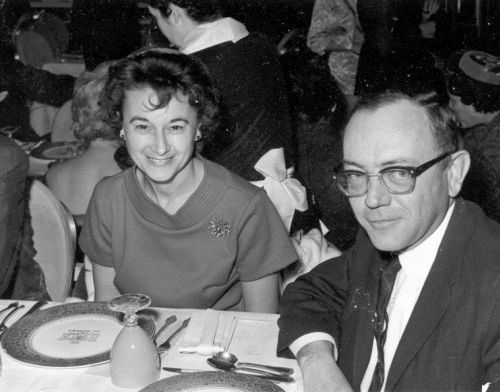


 One of my goals this trip was to trek out to Third Lake, Illinois, to see what (if anything) was left of the summer place our family had owned there from 1965-1991. I knew the cottage itself was gone, after a tree fell on it in the mid-1990s, and I was more interested in the neighborhood itself, which had been a constant summer haunt in my young teen years. Telescopes and dark skies, model rockets, slopping around in the slightly green lake, my first attempt at target shooting–it was formative in ways I didn’t realize for decades.
One of my goals this trip was to trek out to Third Lake, Illinois, to see what (if anything) was left of the summer place our family had owned there from 1965-1991. I knew the cottage itself was gone, after a tree fell on it in the mid-1990s, and I was more interested in the neighborhood itself, which had been a constant summer haunt in my young teen years. Telescopes and dark skies, model rockets, slopping around in the slightly green lake, my first attempt at target shooting–it was formative in ways I didn’t realize for decades.
 Our house is on the slopes of Cheyenne Mountain, and our back deck looks down on Fort Carson. We hear bugle calls at 6:30, noon, and 5:00, accompanied by a cannon. Then every night at 10 PM, taps drifts up the mountain. If I’m still up and around, I go out on the back deck and remember three men. When the echoes die away among the mountain canyons, I salute, and whisper, “Thank you, gentlemen.”
Our house is on the slopes of Cheyenne Mountain, and our back deck looks down on Fort Carson. We hear bugle calls at 6:30, noon, and 5:00, accompanied by a cannon. Then every night at 10 PM, taps drifts up the mountain. If I’m still up and around, I go out on the back deck and remember three men. When the echoes die away among the mountain canyons, I salute, and whisper, “Thank you, gentlemen.” Frank W. Duntemann was attached to the AACS (
Frank W. Duntemann was attached to the AACS ( As I passed the photo of my godmother, Kathleen Duntemann, on the bookcase earlier today, I quietly wished her a happy St. Patrick’s Day. (It might be customary to say, “Wherever she is” except that I know exactly where she is.) She and my grandmother Sade Prendergast Duntemann were excellent cooks, and on St. Patrick’s Day there would almost always be corned beef and cabbage, duck, or goose, all cooked using ancient Irish recipes. I’m not sure if it was a purely family eccentricity, but back when I was still living at home, a well-picked winter goose or duck carcass would be tied with some twine to a branch of the big sycamore tree by the back door. The birds feasted, and according to my mother, the fatty leftovers allowed the now-lean birds to survive the remainder of those nasty Chicago winters.
As I passed the photo of my godmother, Kathleen Duntemann, on the bookcase earlier today, I quietly wished her a happy St. Patrick’s Day. (It might be customary to say, “Wherever she is” except that I know exactly where she is.) She and my grandmother Sade Prendergast Duntemann were excellent cooks, and on St. Patrick’s Day there would almost always be corned beef and cabbage, duck, or goose, all cooked using ancient Irish recipes. I’m not sure if it was a purely family eccentricity, but back when I was still living at home, a well-picked winter goose or duck carcass would be tied with some twine to a branch of the big sycamore tree by the back door. The birds feasted, and according to my mother, the fatty leftovers allowed the now-lean birds to survive the remainder of those nasty Chicago winters.

